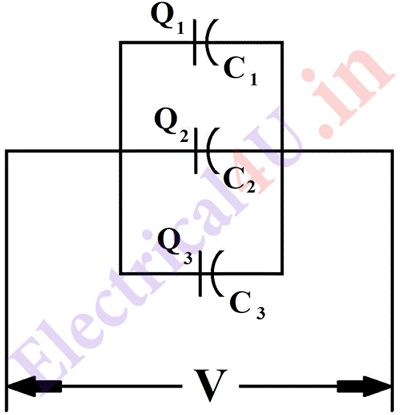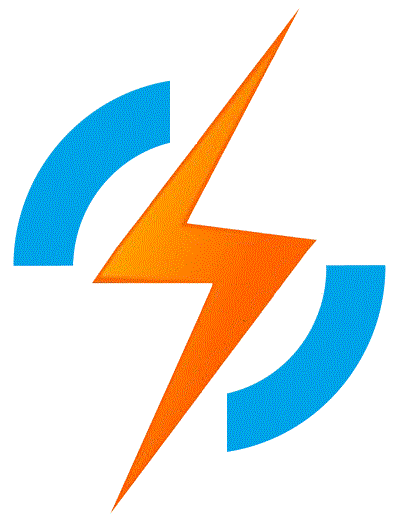The system of capacitor in parallel is shown in following fig.1

When capacitors are connected in parallel, the potential difference or voltage across each is the same. The total charge is the sum of the charges on each capacitor.
The total charge Q = Q1 + Q2 + Q3
Q1 = VC1 ; Q2 = VC2 ; Q3 = VC3
Q = VC = VC1 + VC2 + VC3
Therefore C = C1 + C2 + C3
Example:- Three capacitors C1 , C2 , C3 of the values of 1μF, 2μF and 4μF are in parallel and connected across a potential of 230 V.
Calculate :- (a) Total capacitance (b) Charge on each capacitor and (c)Total charge.
Solution:- The system of the capacitors in the example is shown in fig. 1
(a) Total capacitance C = C1 + C2 + C3
= 1 + 2 + 4 = 7μF
(b) Charge on capacitor C1 = VC1
= 230 x 1 x 10-6
= 230 x 10-6 coulomb
Charge on capacitor C2 = VC2
= 230 x 2 x 10-6
= 430 x 10-6 coulomb
Charge on capacitor C3 = VC3
= 230 x 4 x 10-6
= 930 x 10-6 coulomb.
(c) The total charge C = VC
= 230 x 7 x 10-6
= 1610 x 10-6 coulomb
It may also be checked that Q = Q1 + Q2 + Q3
Q = 10-6 (230 + 460 + 920)
= 1610 x 10-6 coulomb
